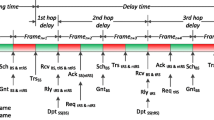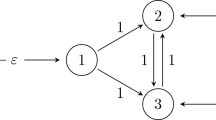
Overview
- Provides a guideline on how to setup, use, and extend NS2
- Presents a layered approach to introduce communication networking protocols and their simulation using NS2
- Includes a large number of examples (e.g., codes) on simulation using NS2
- Contains supplementary material (e.g., simulation exercises) for classes and laboratories on telecommunications networking
- Request lecturer material: sn.pub/lecturer-material
Access this book
Tax calculation will be finalised at checkout
Other ways to access
About this book
Introduction to Network Simulator NS2 is a primer providing materials for NS2 beginners, whether students, professors, or researchers for understanding the architecture of Network Simulator 2 (NS2) and for incorporating simulation modules into NS2. The authors discuss the simulation architecture and the key components of NS2 including simulation-related objects, network objects, packet-related objects, and helper objects.
The NS2 modules included within are nodes, links, SimpleLink objects, packets, agents, and applications. Further, the book covers three helper modules: timers, random number generators, and error models. Also included are chapters on summary of debugging, variable and packet tracing, result compilation, and examples for extending NS2. Two appendices provide the details of scripting language Tcl, OTcl and AWK, as well object oriented programming used extensively in NS2.
Introduction to Network Simulator NS2 can be used by researchers, professionals or graduate students studying telecommunication networks.
Similar content being viewed by others
Keywords
Table of contents (14 chapters)
-
Front Matter
-
Back Matter
Authors and Affiliations
Accessibility Information
Bibliographic Information
Book Title: Introduction to Network Simulator NS2
Authors: Teerawat Issariyakul, Ekram Hossain
DOI: https://doi.org/10.1007/978-0-387-71760-9
Publisher: Springer New York, NY
eBook Packages: Engineering, Engineering (R0)
Copyright Information: Springer-Verlag US 2009
eBook ISBN: 978-0-387-71760-9Published: 10 December 2008
Edition Number: 1
Number of Pages: X, 400
Number of Illustrations: 74 b/w illustrations
Topics: Communications Engineering, Networks, Simulation and Modeling, Computer Systems Organization and Communication Networks, Computer Communication Networks, Electrical Engineering, System Performance and Evaluation



